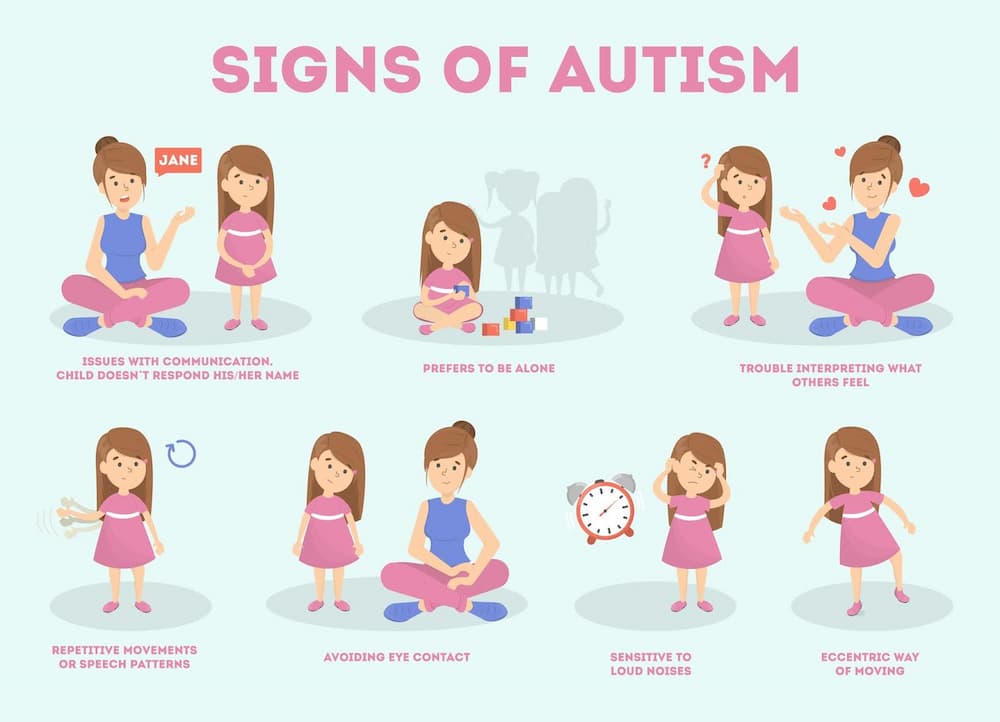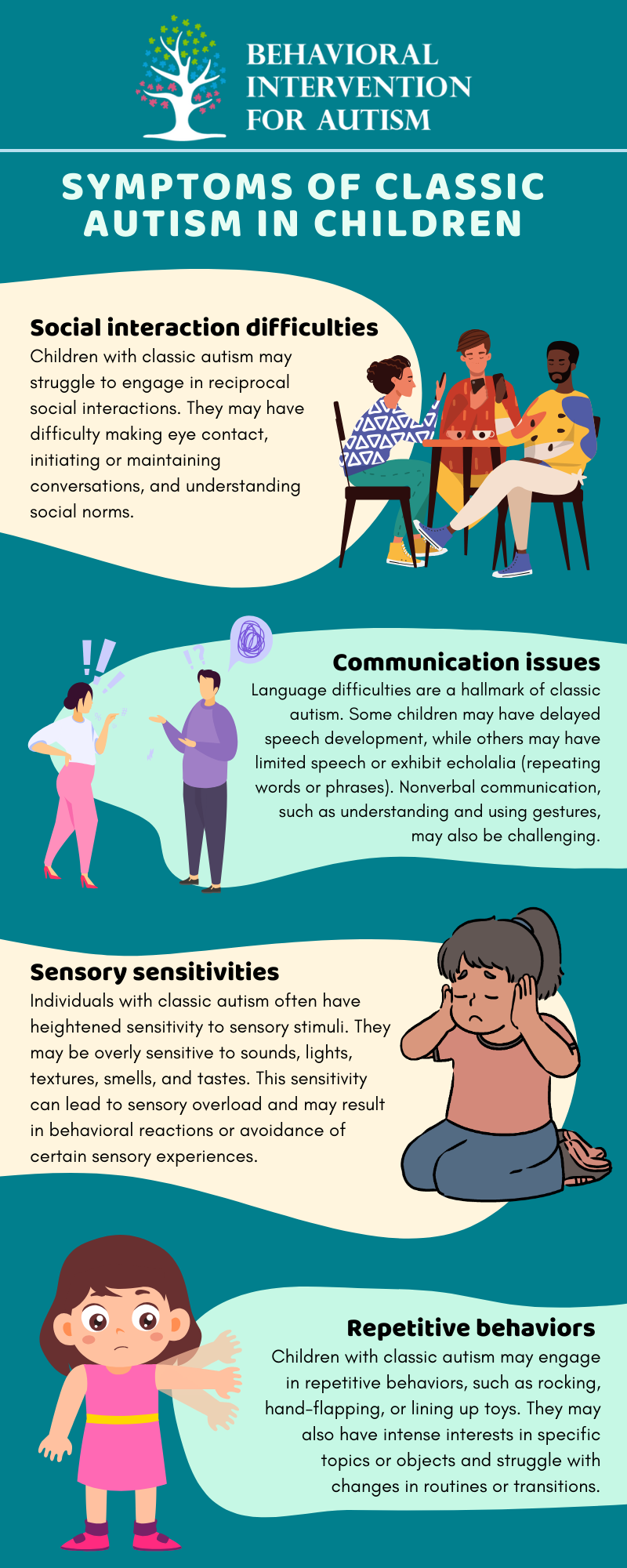Understanding the Influence of Behavioral Autism on Daily Life and Social Communications
You could not understand exactly how deeply behavior autism affects everyday life and social interactions. People on the range commonly browse a world filled with interaction hurdles and sensory overload. These difficulties can lead to disappointment and seclusion, affecting their relationships and general well-being.
Specifying Behavioral Autism and Its Qualities
Behavior autism, commonly described as autism spectrum condition (ASD), includes an array of conditions defined by obstacles in social interaction, communication, and repeated actions. You might notice that individuals with ASD often struggle to translate social cues, which can bring about misunderstandings in discussions. They might find it hard to establish eye get in touch with or engage in tiny talk, making social circumstances really feel overwhelming.
Interaction difficulties can show up in different means, from delayed speech advancement to a choice for making use of fewer words. Repeated behaviors, such as hand-flapping or rocking, can work as coping devices to take care of tension or sensory overload. These features can profoundly affect day-to-day live, making it crucial for you to understand and support those with ASD. By acknowledging these qualities, you can cultivate a setting that advertises approval and urges effective interaction, helping individuals with autism flourish in their daily communications.
The Range of Autism: Recognizing Irregularity in Actions
Autism range condition (ASD) isn't a one-size-fits-all medical diagnosis; it differs commonly among individuals. You could observe that some people with ASD exhibit light signs and symptoms, while others may face more significant challenges. This irregularity can materialize in habits, rate of interests, and sensory level of sensitivities. You might come across individuals that are very verbal and engage quickly in discussions, while others could choose singular tasks or interact non-verbally.
Additionally, the way individuals with ASD respond to sensory input can differ greatly; some may be bewildered by loud sounds or intense lights, whereas others grow in stimulating settings. The spectrum also consists of distinctions in social communications; some individuals might battle to interpret social cues, while others navigate social setups with family member simplicity. Understanding this variability is vital, as it aids you appreciate each individual's unique experience and tailor assistance to their specific demands, fostering an extra comprehensive environment for every person.
Communication Difficulties Encountered by People With Autism
When you communicate with people on the autism range, you may discover their distinct interaction obstacles. They typically encounter troubles with both verbal and nonverbal signs, which can affect their social communications. Comprehending these barriers is crucial for fostering much better links and assistance.

Verbal Communication Difficulties
Several people on the autism spectrum experience spoken interaction troubles that can significantly impact their daily communications. Your quantity, tone, or speed could not line up with social assumptions, causing others to misunderstand your purposes. Acknowledging these challenges can aid you and your assistance network establish strategies to boost communication and cultivate much better links with others in your everyday life.
Nonverbal Interaction Obstacles
Verbal interaction isn't the only challenge people on the autism spectrum face; nonverbal communication obstacles can be equally as considerable. You may find it hard to translate body movement, facial expressions, and eye call, which are important for reliable communication. These difficulties can lead to misunderstandings or misinterpretations of social cues, making interactions really feel confusing or frustrating. You might have a hard time to share your own feelings via nonverbal ways, leaving others unsure of your intentions or feelings. This separate can develop feelings of isolation and disappointment. Identifying these barriers is critical for fostering understanding and empathy in your interactions. By resolving nonverbal interaction, you can find approaches to improve your social experiences and enhance your general top quality of life.
Social Interaction Impacts
Social interactions can typically really feel overwhelming due to the unique interaction obstacles faced by individuals with autism. You might battle with analyzing social signs, making it difficult to comprehend mockery or body movement. This can bring about misconceptions or uncomfortable moments in conversations. In addition, launching and preserving conversations might really feel difficult, triggering anxiousness in social circumstances. You might choose structured settings, making spontaneous communications uncomfortable. It's additionally usual to experience trouble in involving in little talk, which can hinder creating new relationships. Identifying these difficulties can aid you discover methods to boost communication, such as exercising social skills in secure setups or using visual help - Aba Therapist. Recognizing your requirements permits you to navigate social communications with greater self-confidence and convenience.
Social Communication and Relationship Building in Autism
While structure relationships can be challenging for individuals with autism, recognizing their distinct point of views and interaction designs can cultivate meaningful connections. You could discover that many individuals on the spectrum like straight communication and might struggle with social hints or little talk. By being uncomplicated in your communications, you can help produce an environment where they feel comfortable.
Involving in shared passions can likewise serve as a bridge to deeper connections. Whether it's a pastime, a preferred program, or a common interest, these usual strings can open doors to friendship.
Every Day Life Routine: Navigating Methods and difficulties
Navigating day-to-day life routines can be especially challenging for people with autism, specifically when unanticipated modifications take place. To browse these challenges, take into consideration implementing aesthetic timetables or lists.
Developing a routine that includes sensory breaks can likewise More about the author be useful. You can intend short breaks throughout your day to reenergize. It's important to communicate with those around you, allowing them know your resource needs and preferences. This helps produce an understanding atmosphere.
Finally, practice mindfulness techniques to take care of stress and anxiety and anxiousness. Simple breathing workouts or basing methods can make a significant distinction. By integrating these strategies, you can boost your day-to-day regimen and reduce interruptions, making life really feel much more convenient.
Staminas and Capabilities of People on the Autism Range
Recognizing daily life routines is just one element of the autism experience. Several individuals on the autism spectrum possess exceptional toughness and capabilities that establish them apart.
Furthermore, your memory skills commonly beam, specifically in areas of rate of interest. Aba Therapist. This flair for maintaining information can make you an important source in areas like innovation, art, or science. You may likewise display strong visual thinking, enabling you to visualize intricate principles and fix problems artistically
Furthermore, your special point of view on the world can foster compassion and understanding in others, improving social communications. Welcoming these staminas not just improves your confidence but additionally assists others value the diverse talents you bring to the table.
Developing Comprehensive Environments for People With Autism
Producing inclusive settings for people with autism starts with designing sensory-friendly spaces that deal with their special requirements. You can also promote opportunities for social communication, helping to construct friendships and links. By making these modifications, you'll contribute to a much more inviting atmosphere for every person.
Designing Sensory-Friendly Spaces
While developing sensory-friendly spaces, it's crucial to show on the special requirements of individuals with autism. Incorporate silent zones where people can recharge and pull away when bewildered. Include visual schedules or clear signs to aid individuals browse the room with confidence.
Promoting Social Interaction Opportunities
Creating sensory-friendly spaces not just addresses specific comfort but additionally establishes the stage for significant social communications amongst individuals with autism. Urge peer mentoring, matching individuals with autism with supportive peers who can assist them through social circumstances. By implementing these methods, you can boost social opportunities, assisting individuals with autism develop relationships and strengthen their social skills in a risk-free, inviting setting.

Often Asked Inquiries
Just How Can Buddies Support A Person With Behavioral Autism?
You can support a buddy with behavioral autism by holding your horses, paying attention actively, and appreciating their boundaries. Engage in activities they enjoy, connect openly, and create a comfy environment where they feel valued and recognized.
What Resources Are Offered for Moms And Dads of Children With Autism?
You can check out numerous resources for parents of youngsters with autism, consisting of support system, academic websites, and local social work. Linking with other parents can additionally provide valuable insights and shared experiences to aid browse obstacles.
Can Behavioral Autism Adjustment Gradually?

Yes, behavior autism can transform with time. You could observe changes in interaction, social abilities, and habits as your child grows. Early treatment and support frequently play crucial duties in these developing adjustments.
Just How Do Sensory Level Of Sensitivities Affect Life?
Sensory sensitivities can make daily experiences overwhelming. You could battle with loud sounds or intense lights, bring about stress and anxiety or avoidance. Finding settings that suit your demands can substantially boost your convenience and total every day life.
What Prevail Misconceptions About Behavioral Autism?
You could assume behavioral autism only affects interaction abilities, however it's more complex. Many think individuals lack empathy or knowledge, which isn't true. Understanding these false impressions assists foster acceptance and support for those on the range.
Behavioral autism, typically referred to as autism spectrum condition (ASD), includes a range of problems characterized by challenges in social communication, communication, and repetitive actions.Social interactions can often really feel overwhelming due to the special interaction challenges dealt with by people with autism.Designing sensory-friendly rooms not only addresses specific comfort but additionally get more sets the phase for significant social interactions among individuals with autism. Encourage peer mentoring, coupling individuals with autism with encouraging peers who can direct them with social scenarios. By applying these approaches, you can enhance social opportunities, helping people with autism build relationships and strengthen their social skills in a risk-free, inviting environment.
Comments on “Best practices for building sensory-friendly spaces with advice from an Autism Therapist's perspective”